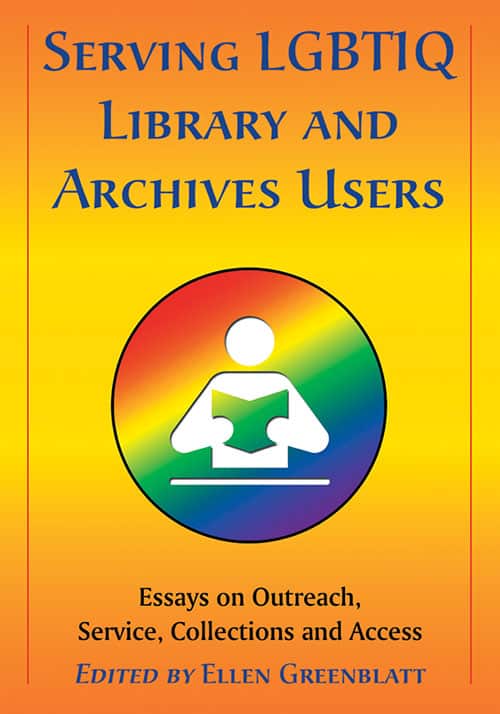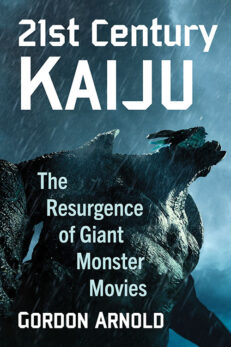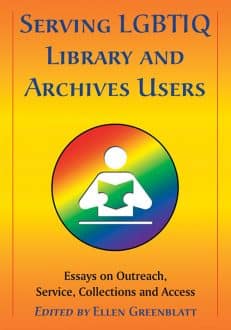Serving LGBTIQ Library and Archives Users
Essays on Outreach, Service, Collections and Access
$55.00
In stock
About the Book
Building upon the legacy of Gay and Lesbian Library Service (1990, “invaluable”—Library Journal; “recommended”—Booklist), this current anthology brings the discussion into a 21st century context by broadening the community base served and by examining the role of the Internet and Web 2.0 in libraries and archives. Many chapters include personal accounts of individuals’ experiences to illustrate the importance of library services to lesbian, gay, bisexual, transgender, intersex, and queer/questioning users. Specific topics include: library services provided to LGBTIQ youth; collection assessment and the process of gauging user satisfaction; the classification of LGBTIQ resources in the Dewey Decimal Classification system; attempts to restrict access to LGBTIQ resources through challenges, censorship, and Internet filtering; and workplace concerns of LGBTIQ library workers.
Instructors considering this book for use in a course may request an examination copy here.
About the Author(s)
Bibliographic Details
Edited by Ellen Greenblatt
Format: softcover (7 x 10)
Pages: 356
Bibliographic Info: glossary, notes, bibliographies, index
Copyright Date: 2011
pISBN: 978-0-7864-4894-4
eISBN: 978-0-7864-6184-4
Imprint: McFarland
Table of Contents
Acknowledgments xi
Introduction (Ellen Greenblatt) 1
Selective Glossary of LGBTIQ Terms (Ellen Greenblatt) 5
Section One: New Communities and Connections
Library Resources and Services for Bisexuals (Jessica L. Howard) 7
Intersex Resources in Libraries (David Cameron Strachan and Jim Van Buskirk) 13
Libraries and the Transgender Community (Michael Waldman) 26
The Internet and LGBTIQ Communities (Ellen Greenblatt) 42
Profiles
It’s Not Monopoly: Gender Role Explorations in Online Environments (K. Fisher) 51
Making a Difference (Jim Van Buskirk) 54
OutHistory.org: Fostering Community-Created LGBTQ Histories (Lauren J. Gutterman) 56
Section Two: Libraries—Contexts and Venues
LGBTIQ Issues in Public Libraries (Catherine Ritchie and Dale McNeill) 59
School Libraries Can Make a Difference (Arla A. Jones) 70
LGBTIQ Users and Collections in Academic Libraries (K. L. Clarke) 81
Queering Libraries and Classrooms: Strategies to Build Inclusive Collections and Services for Sexual Minority and Gender Variant Youth (Alvin M. Schrader and Kristopher Wells) 94
Profiles
Quatrefoil Library: The Next Generation (Karen P. Hogan) 113
San Francisco Public Library’s ìOut at the Library: Celebrating the James C. Hormel Gay and Lesbian Centerî (Jim Van Buskirk) 117
Section Three: Archives—Contexts and Venues
How Queer Pack Rats and Activist Archivists Saved Our History: An Overview of Lesbian, Gay, Bisexual, Transgender, and Queer (LGBTQ) Archives, 1970–2008 (Aimee Brown) 121
It Was Only Supposed to Be Twenty Interviews: GLBTIQ Oral History as Librarianship—The Under the Rainbow Collection (Tami Albin) 136
Now on Exhibit: Bringing Out Materials from LGBTIQ Archives (Jennifer K. Snapp-Cook) 146
Profiles
From a Vision to a Reality: The Birth of the Pacific Northwest Lesbian Archives (Lisa A. Cohen) 154
IHLIA—Making Information on LGBTIQ Issues in the Past and the Present Accessible and Visible (Jack van der Wel) 158
Inside the Files of This Has No Name (tatiana de la tierra) 162
Section Four: Collection Development
Barriers to Selecting Materials about Sexual and Gender Diversity (Cal Gough and Ellen Greenblatt) 165
One for the Road: Personal Reflections on LGBTIQ Literature (James V. Carmichael, Jr.) 174
Meeting the Needs of LGBTIQ Library Users and Their Librarians: A Study of User Satisfaction and LGBTIQ Collection Development in Academic Libraries (Melissa Adler) 184
Profiles
Shoulders to Stand On (Peter Bernier) 194
The Journal of Record: The Gay & Lesbian Review/Worldwide (Martha E. Stone) 197
Section Five: Bibliographic Access
Interfiling Intersex: How Dewey Classifies Intersex in Theory and in Practice (Ben Christensen) 201
The Treatment of LGBTIQ Concepts in the Library of Congress Subject Headings (Ellen Greenblatt) 212
Queer as Folksonomies (Analisa Ornelas) 229
Profiles
The LGBT Life Thesaurus Creation Experience (Linda Rudell-Betts) 240
LGBTIQ History Starts Here: Indigenous/Native Terminology (Karen Vigneault) 244
Section Six: Censorship of LGBTIQ Resources
Censorship of Children’s and Young Adult Books in Schools and Public Libraries (Laura Reiman and Ellen Greenblatt) 247
LGBTIQ Teens—Plugged In and Unfiltered: How Internet Filtering Impairs Construction of Online Communities, Identity Formation, and Access to Health Information (David Brian Holt) 266
Profile
Responding to a Challenge: A Letter from a Public Library Director—Uncle Bobby’s Wedding (James LaRue) 278
Section Seven: Professional Concerns—Workplace Issues, Library Education, Organizations, and Networking
LGBTIQ Librarians and Workplace Issues (Rachel Wexelbaum) 283
Integrating LGBTIQ Representations Across the Library and Information Science Curriculum: A Strategic Framework for Student-Centered Interventions (Bharat Mehra) 298
When Collection Development Leads to Staff Development: The Transgender Resource Collection (Bleue J. Benton and Sharon Grimm) 310
Profiles
The History of the GLBT Round Table (Anne L. Moore) 319
LAGAR (Lesbian and Gay Archives Roundtable) (Mary Caldera) 324
HQ76.3/New England: Lesbian, Gay, Bisexual and Transgendered Librarians and Library Workers (John DeSantis) 328
About the Contributors 331
Index 337
Book Reviews & Awards
- “a long-awaited and welcome guide…should be a welcome addition to any library”—Library Journal
- “Of great importance for any library’s professional collection”—ARBA
- “Before the publication of this book there was very little available on library issues and resources for these communities so it would be a useful addition to the library’s professional development collection.”—The Australian Library Journal
- “An invaluable text…. This guide is a necessary and essential resource for a wide range of institutions and professionals that will introduce readers to the topic in a clear, informative, and entertaining manner…definitive…filled with a wealth of resources for all information professionals and institutions…deserves a place on the shelves of all institutions”—Archival Issues
- “Definitive…deserves a place on the shelf at all libraries…should be mandatory reading for staff and faculty”—Feminist Collections.





